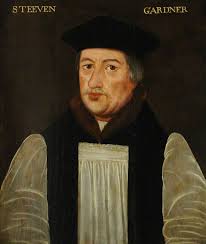Mary I: Life Story
Chapter 6 : Mary's Policy (1553 - 1554)
Mary, like any other monarch, needed a Privy Council. In a display of pragmatism, she took at face value the contrition of those who had begged forgiveness for any involvement in the attempted coup, and leavened their untrustworthiness by appointing some of the household officers who had served her since the 1530s.
She also, unwisely in hindsight, put far too much trust in Simon Renard, the Imperial Ambassador. Since, in Mary’s mind, the Emperor had been her champion and protector for years, she believed that he continued to have her best interests at heart, but for Charles, his support of his cousin would always be subordinate to the best interests of his vast empire, and sometimes, what was good for the empire was not good for Mary. Nevertheless, she did not follow Renard’s advice slavishly, an instance being her refusal to listen to his urgings to have Lady Jane and her husband executed.
The new Queen had two overwhelming ambitions. To restore the religious and social world to the lost Elysian Fields of her childhood, before her father had questioned his marriage to her mother, and to have an heir of her own. Both of these ambitions were within the realm of the possible as matters stood in 1553, but there were serious obstacles to their easy achievement.
To take the religious question first, the vast majority of the population, other than a small, but very vocal group in London and the south east, were still Catholic in their religious habits and inclinations. The situation as left at the death of Henry VIII was essentially one of Catholic practice, with some innovations around an English Bible, and, most radical of all, the removal of the Pope as the head of the Church. Almost immediately, the banned altars and relics that had been hidden away reappeared, and a Latin Mass was sung in London.
This was not universally welcome in the capital, and a number of Protestant preachers began to incite rebellion. Mary was, of course, according to law, the Supreme Head of the Church. However, she did not use this power to immediately reintroduce Catholicism. Instead, she announced that, whilst she herself would not deny her own faith, there would be no compulsion in religious matters until Parliament had been called.
Mary did, however, immediately begin to put pressure on her half-sister to attend Mass and show herself a Catholic. Elizabeth, claiming that she had never been taught the old religion (which cannot be true, as she was thirteen at the time of her father’s death, and both she and Edward had worshipped in conformity with the Act of Six Articles) asked for instruction. She soon aroused suspicions of her sincerity when she complained of stomach-aches during Mass or was prevented from attendance by minor illnesses.
The Parliament of late 1553 was happy to unravel the religious legislation of Edward’s reign, reflecting the opinions of the majority of the population. This Parliament also repealed the Treason Acts which had been passed in Henry VIII’s reign, returning the definition of treason to that of the Act of 1352 which required action against the monarch, rather than just verbal attacks.
The question of Papal Supremacy, however, was more difficult. To remember a time when the Pope was supreme, you had to be in your late thirties, in a time when a growing population meant that fifty per cent of the population was well under this age. There was plenty of enthusiasm for the return of the saints’ days, the processions, the prayers for the dead and the ritual of the centuries, but there was little appetite for payment of taxes to a foreign power.
The other stumbling block, was the land distribution that had followed the dissolution of the monasteries. Even committed Catholics in religion had profited greatly from the land grab, and very few were willing to put their souls above their purses in this case.
For Mary, however, Papal Supremacy mattered, because, if the Pope had no spiritual power higher than that of other bishops, he could not have legitimately granted the dispensation for her parents' marriage. She would probably have been better advised to say nothing on the topic and just accept her position as Queen without concentrating on the whys and wherefores as Elizabeth was later to do. Mary however, was not of a character to cope well with indecision, and, of course, she also genuinely believed in Papal Supremacy and the importance of a single, united Christendom under his leadership.

Some, such as her Lord Chancellor, Bishop Gardiner, who had been happy to deny papal supremacy in the 1530s had come to the conclusion that only by having a central authority could fragmentation of religion be avoided essential in an age that saw religious uniformity as absolutely necessary for the proper functioning of society.
Nevertheless, in this first Parliament, Papal Supremacy was not restored. Mary even took advantage of her position as Supreme Head (although she avoided use of the title) to lay down injunctions as to the conduct of services, and the deprivation of their sees from married priests who refused to abandon their wives.
Mary I
Family Tree




